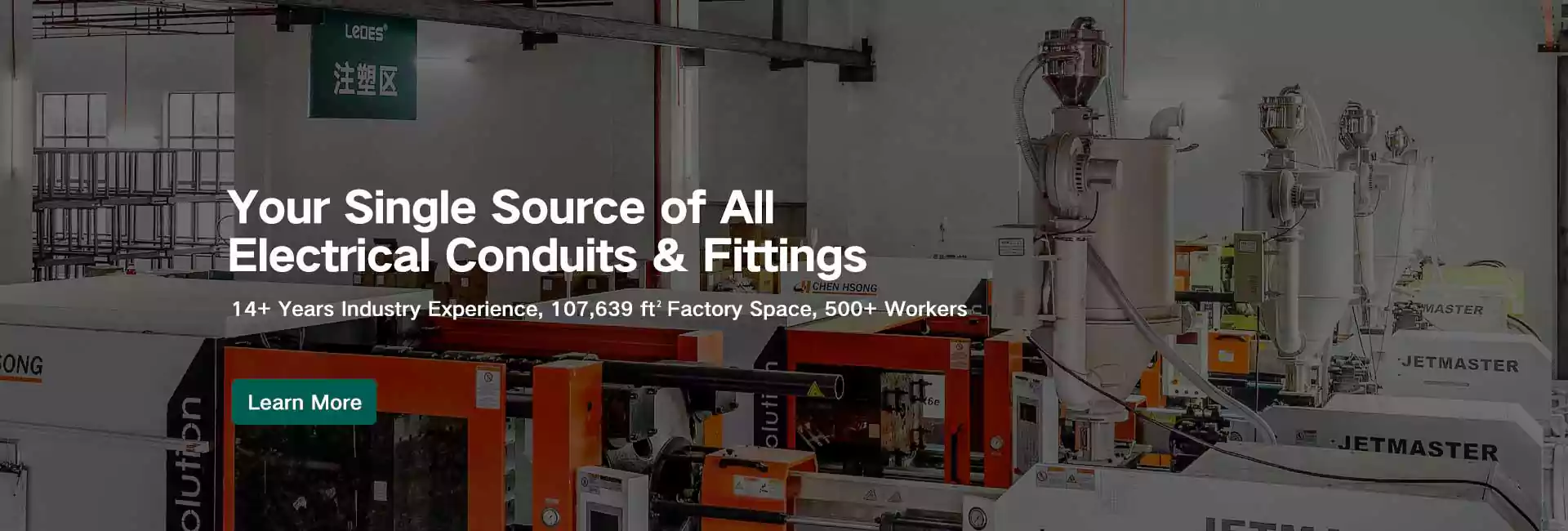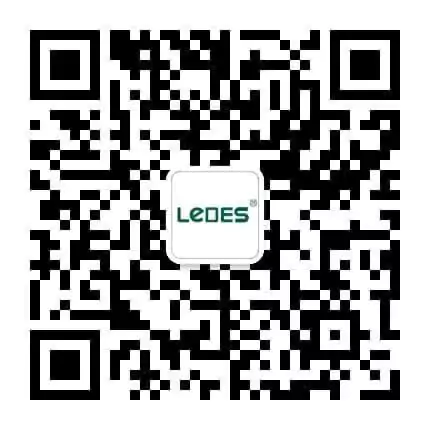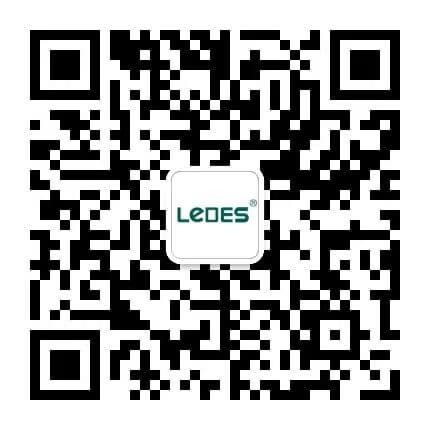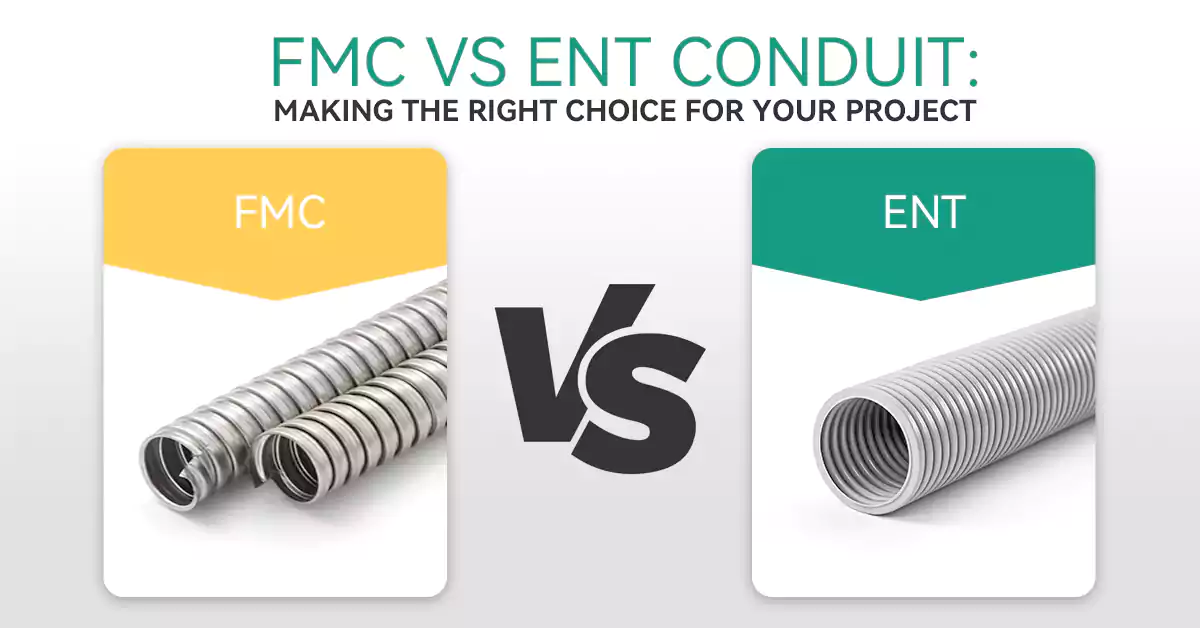
目录
When a project calls for flexible conduit routing, two conduit types consistently stand out as go-to solutions: Flexible Metal Conduit (FMC) and Electrical Nonmetallic Tubing (ENT Conduit). Whether you’re navigating tight spaces, working around obstacles, or designing a system with future accessibility in mind, both FMC conduit and ENT tubing offer the flexibility and protection needed for a safe and efficient electrical installation.
These conduits are widely used across residential, commercial, and light industrial settings where rigid conduit simply isn’t practical. But while they share a degree of flexibility, they differ significantly in terms of material, code requirements, physical durability, and environmental performance.
Why It’s Important to Understand the Difference
Choosing between FMC electrical conduit and ENT conduit isn’t just a matter of preference, it’s a decision that affects safety, compliance, cost, and long-term reliability. FMC, with its durable metal construction, offers excellent mechanical protection and inherent grounding. ENT, on the other hand, is lightweight, easy to install, and ideal for low-impact environments such as interior wall cavities or ceilings.
Understanding the strengths, limitations, and best-use scenarios for flexible metal conduit and electrical nonmetallic tubing ensures you can design and install a system that meets your project’s technical and regulatory requirements while optimizing labor and material costs.
What is FMC Conduit?
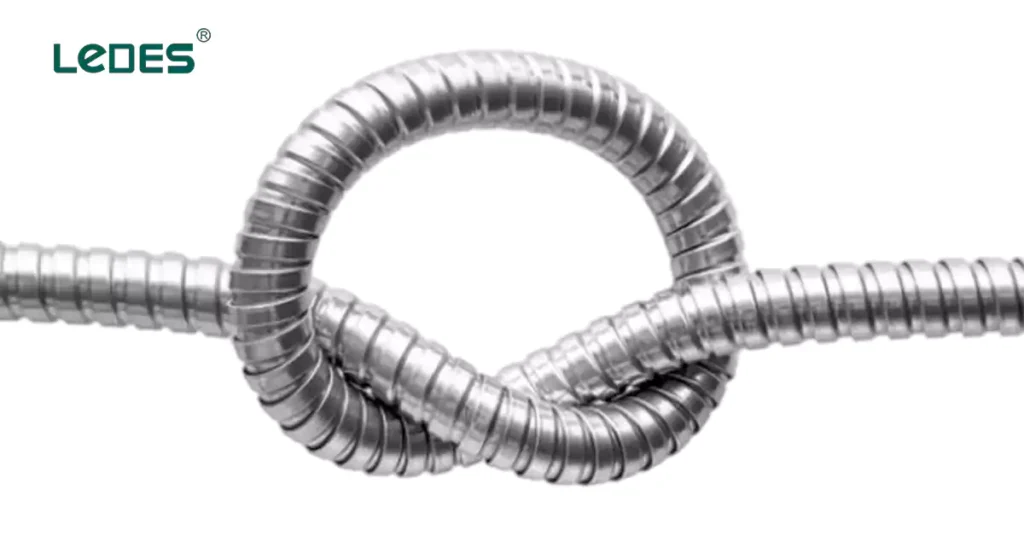
Flexible Metal Conduit (FMC), also known informally as Greenfield or simply flex, is a type of metallic conduit designed for flexible routing of electrical wiring. Unlike rigid conduit systems that require elbows and extensive cutting, FMC electrical conduit offers a bendable, adaptable pathway that simplifies installation in tight, irregular, or vibration-prone areas.
Definition and Construction
FMC is constructed by helically coiling a self-interlocked, ribbed strip of metal, usually aluminum or steel, to form a hollow tube. This spiral-shaped construction creates a flexible, yet mechanically protective conduit through which electrical conductors can be pulled. The interior is generally smooth enough to minimize wire abrasion, and the conduit’s form allows it to bend freely without holding a fixed shape, perfect for navigating around obstacles or through confined architectural spaces.
FMC does not maintain a permanent bend, which distinguishes it from some other types of flexible conduit. This characteristic allows it to accommodate system vibrations and shifting structures, making it ideal for installations in equipment connections, ceiling cavities, or retrofitting projects.
Materials Used in FMC
FMC conduit is typically made from:
- 镀锌钢: Offers high mechanical strength and corrosion resistance, suitable for indoor dry locations.
- 铝: Lightweight and corrosion-resistant, often chosen where minimizing weight or magnetic interference is important.
Both materials are fire-resistant and meet key UL standards for mechanical and electrical performance.
Key Features and Advantages of FMC
Flexible Metal Conduit (FMC) is valued for its adaptability and mechanical protection, especially in environments where rigid conduit is too limiting. From commercial buildings to industrial settings and residential retrofits, FMC offers several distinct benefits that make it a preferred choice for certain electrical installations.
1. High Flexibility
One of the most significant advantages of FMC conduit is its ability to bend freely without special tools. Unlike rigid systems that require prefabricated elbows or precise cutting, FMC can be routed easily around structural obstacles, through wall cavities, and into electrical enclosures with minimal effort. This flexibility translates into:
- Faster installations
- Simplified retrofits
- Reduced need for fittings and joints
FMC is particularly useful in areas subject to vibration, such as motor and equipment connections, where rigid conduit would be more prone to fatigue or damage.
2. Mechanical Protection and Durability
Despite its flexible nature, FMC electrical conduit still offers a high level of mechanical protection. Its metallic construction helps guard conductors against:
- Physical impact
- Crushing forces
- Rodents or insects
This makes FMC a smart choice in environments that demand both routing flexibility and a degree of conductor protection, such as mechanical rooms, utility spaces, and commercial ceilings.
3. Fire Resistance and Safety
FMC is made from non-combustible metals like galvanized steel or aluminum, which means it offers fire-resistant properties that many plastic or non-metallic alternatives cannot. This can be a critical factor in high-risk or code-sensitive installations.
Additionally, FMC is suitable for use in systems requiring electromagnetic interference (EMI) shielding, as its metallic body can help reduce EMI transmission, especially in data-sensitive environments.
4. Grounding Capability (Conditional)
Under the National Electrical Code (NEC), FMC can serve as an equipment grounding conductor, but only under certain conditions based on length, size, and circuit amperage. In short runs with appropriate trade sizes, FMC can eliminate the need for a separate grounding wire, saving time and material costs.
However, for longer runs or higher-amperage circuits, a dedicated grounding conductor should still be pulled through the conduit to ensure code compliance and safety.
5 Common Applications of FMC Conduit
Flexible Metal Conduit (FMC) is a versatile solution used across a wide range of electrical installations. Its unique combination of bendability, mechanical protection, and metallic shielding makes it especially suitable for complex layouts, equipment connections, and retrofitting work. Below are the most common applications and real-world scenarios where FMC conduit proves to be the right choice.
1. Equipment Connections
FMC is often the go-to conduit for connecting motors, transformers, HVAC units, and generators. These types of equipment typically produce movement or vibration during operation, which could damage rigid conduit over time. FMC’s ability to flex and absorb motion helps prevent:
Loosening of terminations
Conductor fatigue
Cracking or splitting of conduit
This makes FMC essential in mechanical rooms, industrial plants, and commercial facilities where reliability is critical.
2. Tight or Irregular Installation Spaces
In buildings where space is limited or the structure is irregular, FMC simplifies routing in ways rigid conduit cannot. Its flexible design allows electricians to snake the conduit around obstructions.
This makes FMC ideal for retrofit projects, remodeling, or any installation that must navigate confined or finished spaces without major construction.
3. Commercial and Institutional Buildings
In office buildings, schools, and hospitals, FMC is used for:
Branch circuit wiring
Lighting connections
Feeders for modular partitions
Ceiling grid power delivery
Its code-compliant metallic protection and low-profile flexibility make it practical in these settings, particularly where aesthetics or minimal disruption is required.
4. Temporary Power Systems
In temporary installations such as construction sites or events, FMC can be used for flexible and fast wiring between equipment and panels. Its ease of handling and reusability allow contractors to:
Adjust setups quickly
Minimize material waste
Comply with safety requirements for exposed wiring
5. Data Centers and Communications Rooms
FMC can provide EMI shielding in environments where data integrity is critical. Its metallic body helps contain and block electromagnetic interference, which is essential when installing power lines near sensitive communication or IT equipment.
In summary, FMC conduit offers the flexibility, strength, and code-recognized protection needed in specialized and high-performance electrical systems. Whether for dynamic environments like machine rooms or space-constrained retrofits in office ceilings, FMC delivers practical value across many sectors.
Liquid-tight Flexible Metal Conduit Option
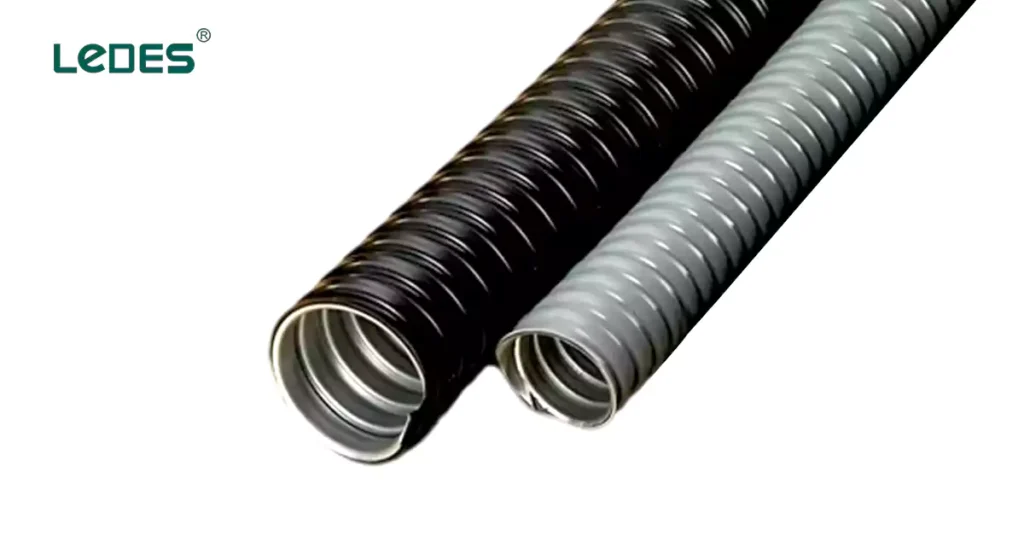
In applications where moisture, oil, or outdoor exposure are concerns, standard Flexible Metal Conduit (FMC) may not be sufficient. That’s where Liquid-tight Flexible Metal Conduit (LFMC) becomes the preferred solution. LFMC builds on the flexibility and strength of traditional FMC but adds an important layer of environmental protection.
What Is LFMC?
Liquid-tight Flexible Metal Conduit (LFMC) is a type of flexible metal conduit that features a protective outer jacket, typically made of PVC (polyvinyl chloride). Inside, it uses the same interlocked helical steel or aluminum core as standard FMC, but the exterior is sealed against moisture, oils, and corrosive agents.
This construction allows LFMC to combine:
- The mechanical protection and grounding capability of metal conduit
- The moisture resistance of a sealed, plastic-coated system
- The flexibility of a coil-type structure
Where Is LFMC Used?
LFMC is especially valuable in wet, damp, or hazardous locations, where standard FMC or ENT tubing would not meet code requirements. Typical applications include:
- Outdoor equipment connections (e.g., air conditioning units, lighting, pumps)
- Car washes, food processing plants, or industrial washdown areas
- Underground stub-ups (when transitioning from buried conduit to surface equipment)
- Marine and shipboard installations
- Commercial rooftops and parking lots
- Oil and gas industry facilities
4 Advantages of LFMC Conduit
LFMC offers several key advantages over standard FMC:
- Watertight and corrosion-resistant: Ideal for wet or corrosive environments
- UV-resistant jacket: Suitable for prolonged outdoor exposure
- Flame-retardant: Adds fire protection where required
- Maintains flexibility: Easy to install in tight or awkward spaces
To ensure safety and compliance, it’s essential to use UL-listed LFMC and approved fittings suited for the environment.
Codes and Standards for FMC Conduit

To ensure safe and compliant electrical installations, Flexible Metal Conduit (FMC) must meet specific standards and regulatory codes in the United States and Canada. These regulations define the permissible applications, construction characteristics, installation rules, and safety requirements for FMC and some for LFMC.
Overview of the Codes and Standards FMC
- 国家电气规范 (NEC) – Article 348 (FMC)
- 加拿大电气规范 (CEC) – Section 12-1000 to 12-1012 (FMC)
- UL 1 – Flexible Metal Conduit
- CSA C22.2 No.56-17 – Flexible Metal Conduit and Liquid-tight Flexible Metal Conduit
NEC Article 348 – Flexible Metal Conduit (FMC)
The National Electrical Code (NEC) Article 348 is the principal authority in the U.S. governing FMC installations. Here’s a summarized breakdown of its major provisions:
允许用途
FMC can be used in both exposed and hidden (concealed) areas inside buildings. It’s ideal for short runs to lighting fixtures or equipment that may need to be moved or adjusted later.
禁止用途
FMC cannot be installed:
In wet or damp locations
In hazardous or flammable environments (unless specifically permitted)
Embedded in concrete or underground
Where it may be exposed to oil, gasoline, or other damaging substances
In hoistways (elevator shafts), unless exceptions apply
Where subject to physical damage
Size Limitations
The maximum trade size allowed for FMC is 4 inches (metric designator 103).
The smallest size (3/8 inch) is only permitted in specific short-length applications, like motor leads or fixture connections, and generally not over 6 feet long.
Conductor Fill Limits
The number of wires inside the conduit is limited by NEC fill tables to prevent overheating.
There’s a special fill chart for 3/8-inch FMC, depending on wire type and insulation.
Only one equipment grounding conductor is allowed in addition to the current-carrying wires.
Bending Rules
FMC can be bent by hand, but the bending radius must be wide enough to avoid damaging the conduit.
The total amount of bending (in degrees) from box to box cannot exceed 360 degrees.
Supporting and Securing FMC
FMC must be securely fastened:
- Within 12 inches of each box, cabinet, or termination
- At least every 4.5 feet (1.4 meters) along its run
There are exceptions for places where support is impractical, like inside finished walls, or for flexible fixture connections.
接地和接合要求
FMC can serve as a grounding path, but only if flexibility after installation is not needed.
If the FMC is used for equipment that moves or vibrates, a separate equipment grounding conductor must be installed.
Bonding jumpers and grounding conductors must follow NEC rules.
Canadian Electrical Code Requirements for FMC
Under the Canadian Electrical Code (CEC), FMC is grouped together with rigid metal conduit (RMC), and both are governed by specific rules (Section 12-1000 to 12-1014). Here’s what you need to know when working with FMC in Canadian installations:
Uses
You can use FMC in buildings made of either combustible or non-combustible materials.
It’s often used in short, flexible connections to equipment or fixtures, particularly where some movement or repositioning is expected.
Minimum Size Limits
In general, conduits smaller than trade size 16 are not allowed.
However, trade size 12 FMC is permitted for short runs up to 1.5 meters to connect equipment.
This makes FMC ideal for final connections where flexibility is needed.
Support and Securing Requirements
- FMC must be secured at intervals no greater than 1.5 meters.
- It also needs to be fastened within 300 mm of every outlet box or fitting.
- Exceptions: You don’t need to secure FMC when it’s “fished” through walls or for short lengths (under 900 mm) at connection points that need flexibility.
Conductors Inside FMC
Wires installed in FMC must comply with Rule 12-910, ensuring proper insulation, temperature rating, and fill limits.
FMC is treated as a raceway and must be sized appropriately to prevent overheating of conductors.
UL 1 - Standard for Flexible Metal Conduit (FMC)
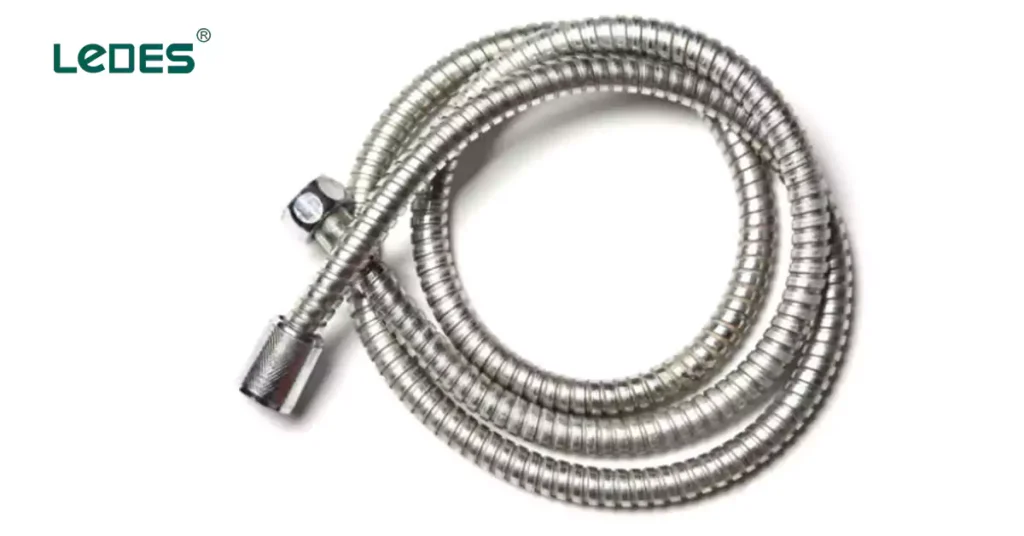
The UL 1 standard outlines essential construction and performance requirements for FMC, ensuring safety, flexibility, and durability in electrical installations. Below is a simplified overview of the key areas covered by the standard.
Construction & Materials
FMC is made from steel or aluminum strip.
钢: Must be carbon steel with a minimum tensile strength of 34,000 psi, and free of rust or scale before being zinc-coated.
铝: Must also meet 34,000 psi minimum tensile strength and have ≤0.40% copper content.
Strip Quality:
The strip must be uniform in width and thickness. Splices (if any) must not affect conduit strength or inside diameter.
Convolutions:
The number of convolutions (spiral ridges) must meet minimum requirements for flexibility and strength.
Interior Surface:
The inside surface must be smooth and free from burrs or sharp edges to protect wiring during installation.
方面
Strip Thickness:
Minimum thickness is defined per trade size. Special types like XRWFMC may use thinner strips if they meet all required tests.
Inside & Outside Diameters:
Both internal and external diameters must fall within UL-specified tolerances to ensure proper fitting and safety in application.
性能要求
To ensure the durability, safety, and compliance of flexible steel and aluminum conduit, several key performance tests are conducted in accordance with the standards. These include:
Zinc Coating Test
This evaluates the quality of the zinc coating on both the steel strip before forming and the finished conduit. The coating must resist copper deposition during immersion in a copper sulphate solution, ensuring corrosion protection and long-term performance.
拉力试验
Finished conduit must withstand a specified tensile load (300 lbf) without opening or separation, verifying its mechanical strength under stress.
Flexibility Test
The conduit is bent around a cylindrical surface of a designated radius to confirm it maintains structural integrity and does not open or expose the inner surface.
Impact Resistance Test (for reduced-wall types)
This test assesses the conduit’s ability to withstand physical impacts without failure, which is critical for demanding installation environments.
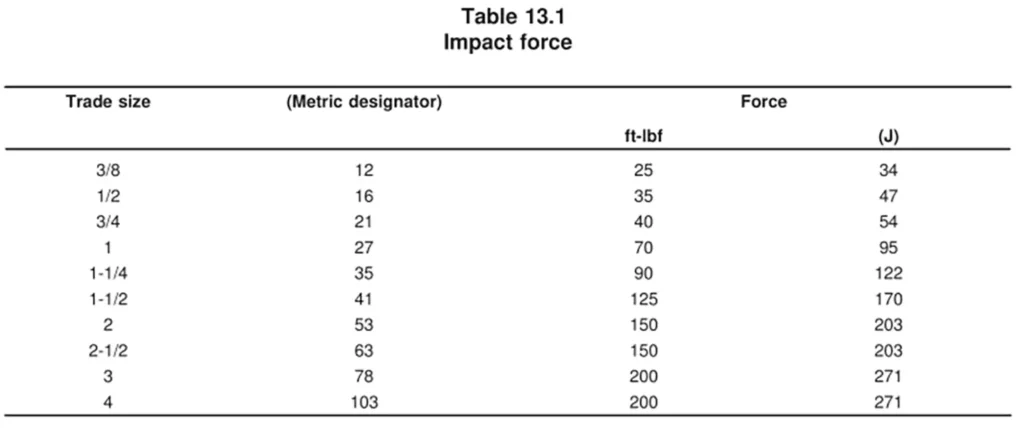
标记要求
Factory Identification (required id the manufacturer has more than one factory):
Manufacturer name or trademark.
Material Identification:
Flexible aluminum conduit must be marked with the letters “AL”.
Marking interval: No more than 12 inches (305 mm).
Tag on Each Coil:
Each coil of flexible steel or aluminum conduit must have a tag or marking showing:
a) Manufacturer Identification
Name, trade name, or other distinctive identification.
b) Date of Manufacture
By month and year.
c) Trade Size
Nominal size of the conduit.
d) Connector Compatibility Notice
A warning: “Use only with connectors intended for this type of conduit.”
Connector packaging should also be marked to indicate compatibility:
“FMC,” “FEFMC,” “ALFMC,” etc., based on type and material.
CSA C22.2 No.56-17 - Standard for FMC and LFMC
CSA C22.2 No. 56-17 is a standard for flexible metal conduit and liquid-tight flexible metal conduit, it outlines the requirements for their construction, dimensions, marking and performance. Here are some key information for them.
Construction and Material
FMC is made from zinc-coated steel or aluminum strips (LFMC can use bronze, zinc-coated steel, or aluminum).
All strips must have uniform thickness and width.
Inside of the conduit must be smooth and free of sharp edges to prevent wire damage.
Both internal and external diameters must meet specific limits to ensure proper fit and safe conductor fill.
Thermoplastic Jacket (LFMC only)
LFMC must have an overall thermoplastic jacket:
Minimum thickness required (per Table 4).
Outer diameter must stay within limits (per Table 5).
Jacket provides liquid-tight protection.
标记要求
Compliant FMC must be clearly marked with the manufacturer’s name or trademark, trade size.
FMC made from aluminum must be marked with “AL”, embossed or indented every 150 mm (6 in).
For LFMC: Should include “LIQUID-TIGHT CONDUIT” on the outer jacket,
LFMC must marked with temperature ratings, SUN RES if rated.
Performance Testing Requirements
FMCs are primarily tested to verify their mechanical robustness and electrical continuity under normal and extreme installation conditions. The following tests are required:
拉力试验
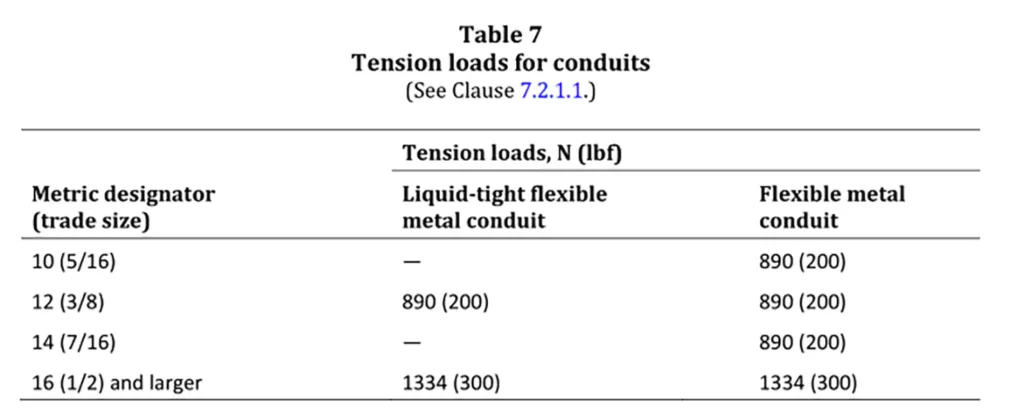
Finished FMC must withstand an axial tension load (as outlined in the CSA table) for a specific duration without opening its convolutions or sustaining damage. This test verifies that the conduit can endure pulling forces during installation or operation, ensuring mechanical integrity and protection of the enclosed wiring.
Flexibility Testing
FMCs must maintain mechanical integrity without opening their convolutions when bent around a specified mandrel. This test ensures that the conduit can withstand tight bends in real-world installations without compromising its structure or safety. The testing follows the Flexibility of Armored Cable and Metal-Sheathed Cable protocol outlined in CSA C22.2 No. 2556.
Protective Zinc Coating Performance
The protective galvanized zinc coating applied to the steel strip (used in FMC manufacturing) must pass corrosion resistance testing using the Copper Sulfate Test (Preece Test). The standard specifies no fixed copper deposits after immersion cycles, ensuring the conduit’s durability in harsh or corrosive environments.
Extra Test for Liquid-Tight Flexible Metal Conduit (LFMC)
LFMC undergoes a more comprehensive set of tests due to its added components (like a thermoplastic outer jacket) and intended usage in wet, corrosive, or outdoor conditions. The relevant testing follows CSA C22.2 No. 56 and cross-references to CSA C22.2 No. 2556.
1. Thermoplastic Jacket Physical Properties
The jacket material must meet specific tensile strength and elongation standards both before and after accelerated aging. These physical performance criteria are tested using methods from CSA C22.2 No. 2556 (Clause 4.2), ensuring that the outer jacket retains flexibility and strength over time.
2. Deformation Resistance
LFMC jackets must resist deformation under heat and pressure. When subjected to 121°C with a 2000g load for 1 hour, the jacket thickness must not decrease by more than 35%. This simulates real-world thermal stress scenarios.
3. Optional Weather Resistance Test
For products marked as suitable for outdoor use, the jacket must retain 80% of its tensile strength and elongation after 1000 hours of xenon-arc exposure, simulating long-term UV and weathering effects.
4. Axial Tension Performance
Finished LFMC must withstand specified axial tension (based on conduit trade size) for 60 seconds without damage to the jacket or opening of the metal convolutions. This ensures durability during pulling or installation.
5. Zinc Coating Corrosion Resistance
Like FMC, LFMC’s steel strip (both before and after forming) must meet protective coating standards under the Copper Sulfate Test, verifying the effectiveness of the zinc layer in resisting corrosion.
6. Flexibility Under Cold Conditions
LFMC must retain structural integrity when subjected to cold bending. The conduit is conditioned at a specified low temperature, then bent around a mandrel in both directions. No cracking or separation should occur in either the metal or the plastic components. This cold bend test evaluates real-world performance in low-temperature installations.
7. Flame Resistance
LFMC must pass flame resistance testing:
FT1 Vertical Flame Test: The conduit must self-extinguish within 1 minute after five 15-second flame applications. No more than 25% of a marking indicator may be burned.
Optional FT4 Vertical Tray Flame Test: When applicable, the conduit on a cable tray (unfilled) must not exceed 1.5 meters of char length. This test provides additional assurance for installations where fire spread resistance is crucial.
8. Cold Impact Resistance
After conditioning at cold temperatures (as per Table 9 in the standard), LFMC is subjected to a 40 N impact. The conduit must not crack or rupture, demonstrating robustness under potential field abuse during freezing conditions.
What is Electrical Nonmetallic Tubing (ENT)
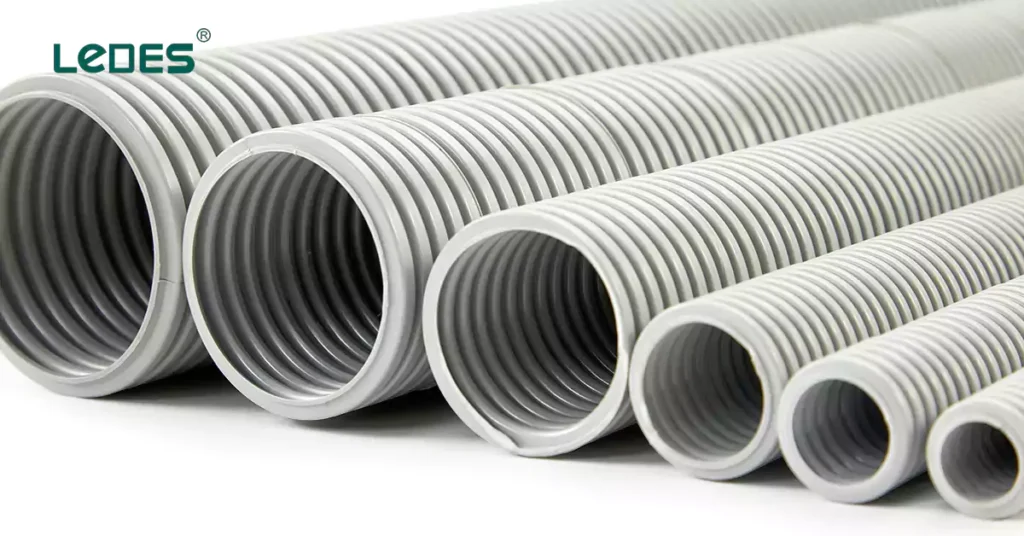
电气非金属管 (ENT) is a flexible, lightweight, corrugated plastic raceway system designed for electrical wiring installations in residential, commercial, and institutional buildings. It serves as a protective pathway for electrical conductors and cables, offering an efficient alternative to traditional rigid or metallic conduit systems.
ENT is manufactured from non-metallic materials, most commonly polyvinyl chloride (PVC) or other thermoplastic compounds, that provide a unique combination of durability, flexibility, and corrosion resistance. Its corrugated design allows it to bend easily without the need for additional tools or fittings, reducing installation time and labor costs.
4 Features of ENT Conduit
- Flexible Construction: ENT’s corrugated structure enables easy routing through walls, floors, and ceilings—even in tight or complex spaces—without elbows or bending equipment.
- 轻的: Significantly lighter than metal conduit, ENT is easier to handle, transport, and install.
- Non-metallic Material: Resistant to corrosion, rust, and chemical degradation, making it suitable for moist or corrosive environments.
- 阻燃性: ENT is designed to meet vertical flame and smoke performance requirements per relevant North American safety standards.
5 Advantages of ENT Conduit
- Quick and Easy Installation: ENT can be cut with a hand tool and installed without special bending or threading equipment, reducing labor time and costs.
- Reduced Material Handling: Its light weight makes it easier to transport and maneuver on job sites.
- 降低成本: Compared to metal conduit systems, ENT offers lower material and installation costs.
- 耐腐蚀性和防潮性: Ideal for damp or corrosive environments where metal conduits may degrade over time.
- Code Compliant: ENT is approved by both U.S. and Canadian standards (e.g., UL 1653 and CSA C22.2 No. 227.1) and is recognized in the National Electrical Code (NEC) and Canadian Electrical Code (CEC).
Codes and Standards for ENT Conduit
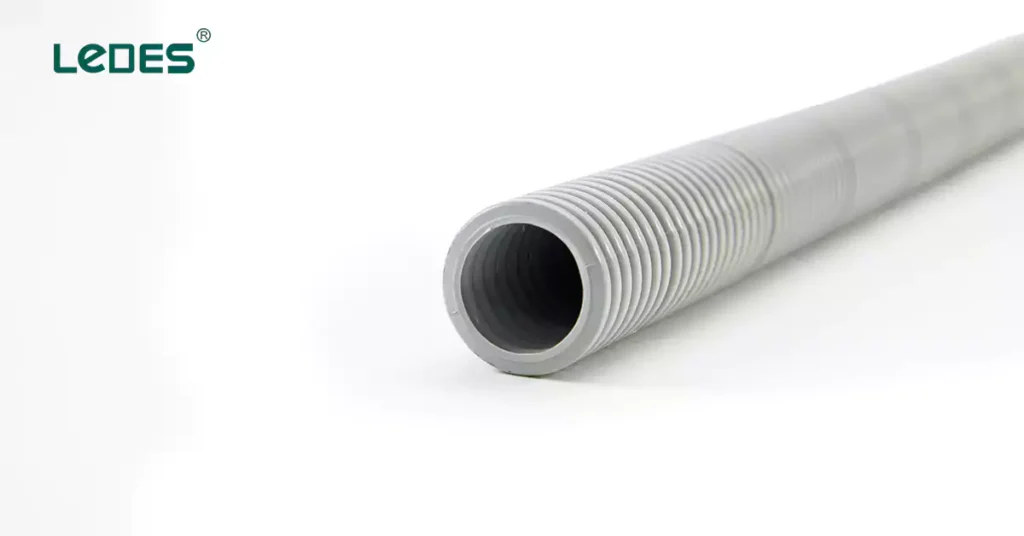
To ensure safe and compliance of ENT for electrical systems, ENT should comply to related industry standards and codes,
ENT Conduit Codes and Standards List
- 国家电气规范 (NEC) – Article 362 (ENT)
- 加拿大电气规范 (CEC) – Section 12-1500 to 12-1514 (ENT)
- UL 1653 / CSA C22.2 No.227.1 – Safety Standard for Electrical Nonmetallic Tubing
NEC Article 362 - Electrical Nonmetallic Tubing (ENT)
NEC Article 362 covers the requirements for ENT, a pliable, corrugated, nonmetallic raceway used for electrical installations. According to Section 362.1, this article outlines the use, installation, and construction specifications for ENT and associated fittings. Importantly, Section 362.6 mandates that ENT and its fittings must be listed, ensuring they meet recognized safety and performance standards.
允许用途
ENT is permitted in various applications, provided specific conditions are met:
- Building Height Restrictions: In buildings not exceeding three floors above grade, ENT can be used for exposed or concealed work, as long as it’s not prohibited by Section 362.12.
- Concealed Installations: In any building, regardless of height, ENT is allowed when concealed within walls, floors, and ceilings that provide a thermal barrier with at least a 15-minute finish rating.
- Fire Protection Exception: If an approved automatic fire protective system is installed on all floors, ENT may be used exposed or concealed in buildings exceeding three floors above grade.
- Concrete Encasement: ENT can be encased in poured concrete or embedded in a concrete slab on grade, provided fittings identified for this purpose are used.
- 潮湿的地方: ENT is permitted in wet locations when installed in concrete slabs on or below grade, using fittings listed for the purpose.
- 温度考虑因素: Conductors or cables rated at a temperature higher than the listed temperature rating of ENT may be installed, provided they are not operated at a temperature exceeding the ENT’s rating.
禁止用途
ENT is not suitable for certain environments and applications:
- 危险场所: ENT is prohibited in hazardous (classified) locations unless permitted by other NEC articles.
- Support of Equipment: ENT cannot be used to support luminaires or other equipment.
- High Ambient Temperatures: ENT should not be used where ambient temperatures exceed 50°C (122°F) unless listed otherwise.
- Direct Earth Burial: ENT is not permitted for direct burial in the earth.
- Exposed Locations: ENT is generally not allowed in exposed locations, with specific exceptions outlined in Section 362.10.
- Theaters and Similar Locations: ENT is restricted in theaters and similar venues, except as provided in Sections 518.4 and 520.5.
- Sunlight Exposure: ENT must not be used where exposed to direct sunlight unless identified as sunlight resistant.
- 物理伤害: ENT is unsuitable for areas where it would be subject to physical damage.
Sizing and Fill Requirements
- Minimum and Maximum Sizes: ENT trade sizes range from ½” (metric 16) to 2½” (metric 63)。
- Conductor Fill: The number of conductors or cables in ENT must comply with Chapter 9, Table 1 of the NEC for allowable percentage fill (362.22).
Construction Specifications
- 材料要求: ENT must be made of material that does not exceed the ignitability, flammability, smoke generation, and toxicity characteristics of rigid (nonplasticized) polyvinyl chloride.
- 标记: ENT must be clearly and durably marked at least every 3 meters (10 feet) as required in Section 110.21(A). The type of material should also be included in the marking.
CEC Requirements for ENT Conduit
In Canada, the use and installation of Electrical Nonmetallic Tubing (ENT) is regulated under Section 12 of the Canadian Electrical Code (CEC), Part I, specifically Rules 12-1500 to 12-1514. These requirements govern permitted uses, restrictions, installation practices, and safety provisions.
Permitted Uses
ENT is permitted in the following conditions, subject to compliance with general wiring rules:
地下设施:
ENT may be used underground, including burial depth, mechanical protection, and backfilling.
Exposed or Concealed Locations:
ENT is suitable for both exposed and concealed installations within buildings, provided other CEC provisions are met.
Restrictions on Use
ENT shall not be used in locations where it may be subject to physical damage, unless adequate mechanical protection is provided. This includes areas susceptible to impact during or after construction.
支持
ENT must be securely fastened in place using approved methods:
Support must be placed within 1 meter of each outlet box, junction box, cabinet, coupling, or fitting.
The maximum spacing between supports is 1 meter.
导体数量
The conductor fill capacity inside ENT must comply with Rule 12-910, which specifies allowable conductor quantities based on cross-sectional area and conductor insulation types. Overfilling the conduit can lead to overheating and noncompliance with ampacity derating rules.
Temperature Limitations
ENT has temperature-based installation limitations:
- ENT must not be used in areas where the tubing may be exposed to temperatures exceeding 75°C under normal operating conditions.
- Higher-temperature rated insulated conductors (above 75°C) may be used, but ampacity must be limited to that of 90°C rated conductors, regardless of the conductor’s rating.
Connections and Couplings
Above-ground Joints:
When ENT is joined or connected to fittings, boxes, or cabinets, only fittings specifically designed for ENT are permitted.
Underground Joints:
When used underground, ENT couplings must be solvent-cemented using a suitable cement to ensure moisture resistance and mechanical strength.
Support of Equipment
ENT is not permitted to support electrical equipment such as luminaires, boxes, or cabinets. All equipment must be supported independently to avoid structural stress on the tubing.
Bonding Continuity
ENT is a non-conductive raceway, and therefore, a separate bonding (grounding) conductor must be installed in accordance with Rules to ensure electrical continuity and fault current return path.
UL1653 / CSA C22.2 No.227.1 - Standards for ENT
Electrical Nonmetallic Tubing (ENT) is manufactured to meet rigorous safety, mechanical, and material performance requirements under UL 1653 and CSA C22.2 No. 227.1. These harmonized North American standards ensure that ENT products are safe for use in building wiring systems across the U.S. and Canada.
Construction and Material Requirements
Non-metallic and corrugated, allowing for flexibility during installation.
Made from thermoplastic materials such as PVC or polypropylene, formulated to meet flame resistance, mechanical strength, and temperature performance requirements.
ENT is used in a ambient temperature of 50°C, if used in attics, it should have a relative thermal index of 60°C.
方面
Here’s a brief overview of the most critical performance tests required by UL1653 / CSA C22.2 No.227.1:
Vertical Flame Test
Assesses ENT’s flame-retardant capability. The tubing must self-extinguish and limit flame spread when subjected to a vertical burn test.
弯曲试验
Ensures the tubing retains structural integrity and does not crack when bent to a specified radius at room temperature.
挠度试验
Measures deformation under applied load. ENT must resist excessive flattening when pressure is applied.
冲击试验
Verifies toughness by dropping a weight onto the tubing at both room and cold temperatures. ENT must not crack or shatter.
Cold Bend Test
Conducted at low temperatures (typically -20°C), this test checks for brittleness. ENT must remain flexible and unbroken.
拉力试验
Ensures that fittings and conduit connections resist pullout forces typical in installation conditions.
刚度测试
Evaluates mechanical rigidity to prevent sagging or collapse during installation and operation. In Canada, the ENT should have a minimum stiffness of 300 kPa at 5% deflection. In the U.S. there’s no requirement specified.
For detailed descriptions, pass criteria, and test procedures, please refer to our article: ENT Tubing for code compliance and test items.
FMC vs. ENT: A Comprehensive Comparison
Choosing the right type of conduit, Flexible Metal Conduit (FMC) or Electrical Nonmetallic Tubing (ENT), depending on several key factors including application environment, mechanical protection requirements, code compliance, ease of installation, and cost.
Both FMC and ENT serve similar functions in protecting and routing electrical wiring, but their materials, construction, and performance characteristics differ significantly. Understanding these differences is essential to selecting the most suitable solution for your specific project.
The following comparison table outlines the critical distinctions between FMC and ENT in terms of materials, flexibility, environmental resistance, fire performance, strength, installation needs, and typical applications.
特征 | 联邦移动通信委员会 | 耳鼻喉 |
材料 | Galvanized steel or aluminum | PVC |
灵活性 | High; bends easily, but requires more effort than ENT | Very high; easily bends by hand without tools |
耐腐蚀 | Moderate; better with coated FMC or aluminum | Excellent; inherently non-corrosive |
机械保护 | Superior; provides robust protection against physical damage | Limited; needs extra protection if exposed to damage |
Fire Performance | Inherently fire-resistant (high melting point, non-combustible) | Fire resistant, flame retardant, self-extinguishing (moderate) |
安装 | Relatively easy; requires cutting tools (hacksaw/grinder) and sometimes benders | Easier; hand-bendable, simple cutting tools, snap-on fittings |
Bonding/Grounding | Metal body can serve as ground if listed | Requires separate bonding conductor |
重量 | 更重 | 轻的 |
成本 | Higher material and labor cost | More cost-effective |
Codes and Standards | NEC, ECE, UL 1, CSA C22.2 No.56 | NEC, CEC, UL 1653, CSA C22.2 No.227.1 |
常见应用 | Dry locations, motor leads, vibration-prone areas | Concrete slabs, walls, ceilings, residential and commercial wiring |
FMC or ENT: Making the Right Choice for Your Project
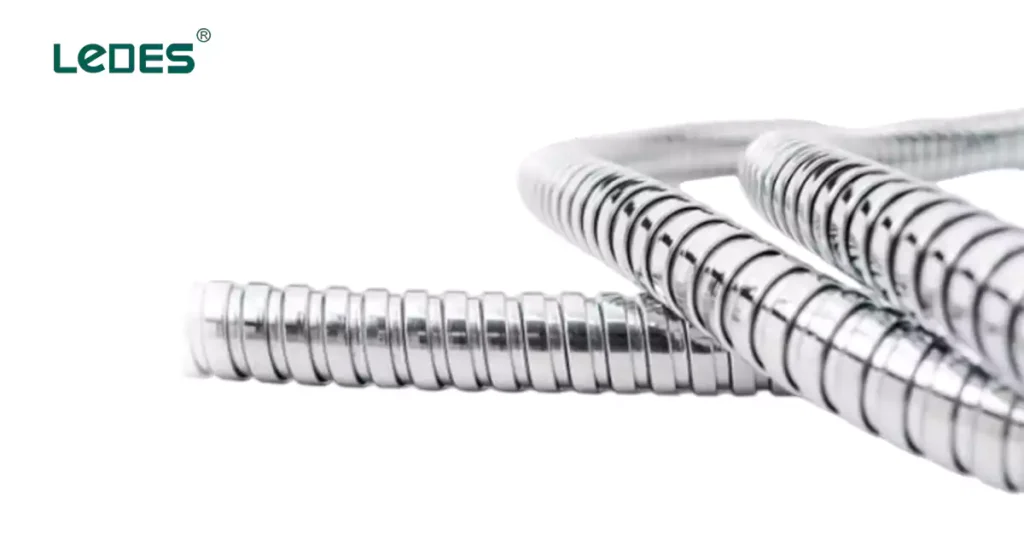
When selecting between Flexible Metal Conduit (FMC) and Electrical Nonmetallic Tubing (ENT), it’s essential to go beyond just code compliance. The right choice depends on a careful balance of site-specific conditions, installation goals, performance needs, and future adaptability.
1. Environmental Conditions
- Wet or dry locations: The installation environment is the first and most decisive factor. In dry, interior locations, both FMC and ENT are viable options. However, when dealing with wet, damp, or outdoor conditions, standard FMC is not suitable—Liquidtight Flexible Metal Conduit (LFMC) is required in such cases. ENT, while moisture-resistant, typically cannot be used in direct burial or continuously wet outdoor environments, unless specially rated.
- Exposed and concealed: Concealment and exposure also matter. FMC is permitted in both exposed and concealed areas. ENT, by contrast, must be concealed in buildings taller than three stories, per NEC requirements, and may only be used in exposed areas of smaller buildings if not subject to physical damage.
- Temperature and Chemical: Temperature and chemical exposure are further considerations. FMC, with its metallic construction, withstands temperature extremes and harsh environments better. ENT, made from PVC, can degrade above 50°C unless listed otherwise and may deform under sustained heat loads, but still offers good chemical resistance for many indoor applications.
2. Mechanical Protection
- Mechanical Durability: When it comes to mechanical durability, FMC has a clear advantage. Its metal construction makes it well-suited for areas with risk of impact, vibration, or abrasion, such as commercial kitchens, industrial facilities, or locations near machinery. ENT is more flexible but offers limited protection, making it ideal for concealed runs in residential or commercial walls where physical threats are minimal.
- Vibration: Vibration resistance is another critical area where FMC excels. Its helical structure helps absorb movement, making it ideal for connections to motors and vibrating equipment.
- EMI Shielding: Additionally, FMC provides electromagnetic interference (EMI) shielding, a key requirement in applications involving sensitive electronics or data communication systems. ENT, being non-metallic, offers no such protection.
3. Cost, Labor, and Maintenance
Cost evaluations must go beyond just the price of conduit per foot. ENT offers faster installations, with snap-in fittings and hand-bendability reducing labor time dramatically. It’s particularly effective in high-volume or repetitive applications like residential or office construction, where labor savings can outweigh material costs.
On the other hand, FMC’s higher material and labor costs reflect its robustness. For environments that demand greater resilience and fire resistance, the additional investment often pays off in reduced risk and lower long-term maintenance.
Maintenance needs also diverge: ENT is corrosion-proof and largely maintenance-free. FMC is corrosion-resistant but may require inspection and possible replacement over time in corrosive or damp environments.
4. Understand the Code
Regardless of material performance, all installations must meet the National Electrical Code (NEC) and any local amendments. For example:
ENT is not permitted in plenum spaces or hazardous environments.
FMC must meet bonding and grounding requirements, particularly in power distribution applications.
Engaging early with the Authority Having Jurisdiction (AHJ) ensures that material choices will pass inspection and that any special-use conditions are accounted for. Some inspectors may scrutinize markings or listings more closely than others, so proactive planning pays off.
5. Plan for the Future
In a world where system modifications and technology upgrades are frequent, future-proofing conduit infrastructure is a smart move. ENT’s flexibility and pull-through design make it easier to add or re-route wiring, minimizing downtime during upgrades. This makes it a strong contender for tenant spaces, education, or healthcare facilities, where adaptability is key.
FMC, while less flexible once installed, still supports cable changes and upgrades—especially if installed with accessible junction points.
5 Common Installation Mistakes and Best Practices
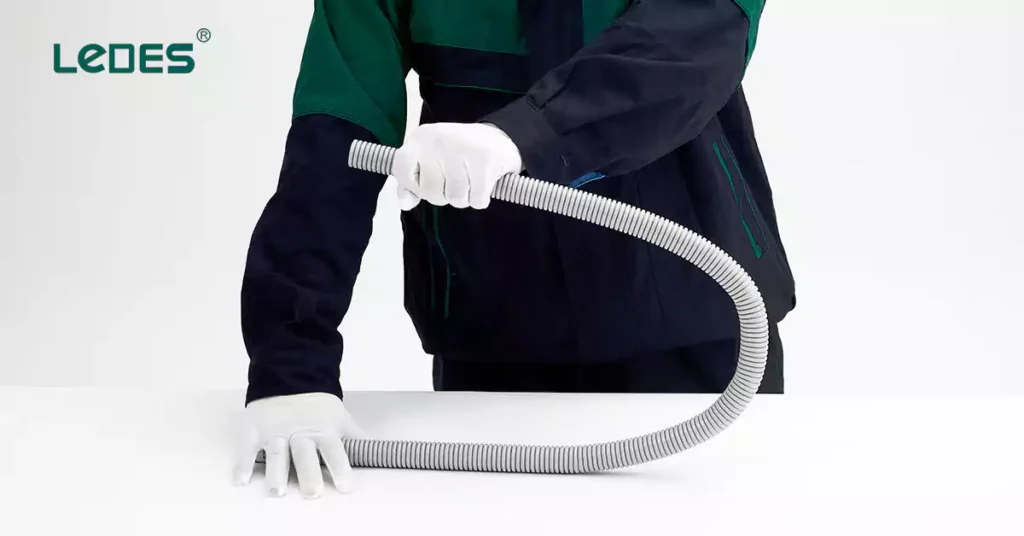
Whether working with Flexible Metal Conduit (FMC) or Electrical Nonmetallic Tubing (ENT), proper installation is essential for electrical safety and long-term system performance. Despite their differences in material and flexibility, both conduit types are vulnerable to common installation mistakes. Below, we explore these pitfalls and outline best practices that ensure code compliance, reliability, and efficiency.
专业提示: 想要了解更多 conduit fill, cutting ENT, and pull wiring tips for ENT conduit? You can click the link above to read our previous article.
1. Avoiding Incorrect Sizing and Overfilling
- Choosing the right size: Selecting the correct conduit size is more than a matter of convenience, it’s a critical safety consideration. Undersized conduits restrict airflow around conductors, increasing the risk of overheating and making wire pulling labor-intensive. On the other hand, unnecessarily large conduit may increase project costs and complicate fittings and support systems.
- Fill Capacity: Another frequent issue is overfilling, where too many wires are packed into the conduit. This not only makes installation harder but also poses a real fire hazard due to reduced heat dissipation. Best practice dictates always referring to NEC fill tables to determine proper sizing based on conductor count and gauge. For general guidance, keeping conduit fill below 40% for multi-wire installations strikes a balance between safety, ease of maintenance, and future upgrades.
2. Proper Support and Secure
FMC and ENT, though flexible, require structured support. Without it, conduits can sag, shift, or even become damaged, putting both the conduit and internal wiring at risk. Secure anchoring at proper intervals maintains alignment, reduces mechanical stress, and preserves system integrity over time.
The National Electrical Code provides clear guidelines for support spacing. FMC typically must be supported every 4.5 feet and within 12 inches of termination points. ENT requires tighter control – support every 3 feet and near ends. Using appropriate clamps, straps, or hangers matched to the conduit material is crucial to prevent loosening, movement, or abrasion in active environments.
Support according to you local codes.
3. Bending Limits
Both FMC and ENT are valued for their flexibility, but that doesn’t mean bending them is without limits. Improper bending—such as tight corners or excessive cumulative angles—can lead to pinched conductors, insulation breakdown, and increased pulling resistance. These issues often translate into costly delays or failures down the line.
To avoid these outcomes, installers should respect the minimum bend radius, typically no less than three times the conduit diameter, and limit total bend angles in a single run to 360 degrees. FMC usually requires a mechanical bender for clean, consistent bends, while ENT can be bent manually, though still with care and control. The goal is smooth, gradual curves that support wire movement without stressing materials.
4. Addressing Environmental Factors
Conduit failure often stems from installing products in environments they weren’t designed to withstand. For example, using standard FMC in damp or wet areas can accelerate corrosion, while exposing ENT to direct sunlight or underground conditions without proper ratings may lead to cracking or deformation.
A key best practice is aligning conduit type with site conditions from the start. For wet locations or outdoor use, Liquid-tight FMC is the proper choice due to its sealed jacket. Standard ENT performs best indoors or within concrete slabs, where it’s protected from UV rays and water. Installers should also be mindful of ambient temperature ranges and ensure all fittings are adequately sealed to prevent moisture ingress.
5. Ensuring Proper Connections and Grounding
Even with the right conduit and layout, poor connections can undermine the entire system. Loose fittings can expose wires, interrupt continuity, or introduce vibration damage. For metallic conduit like FMC, grounding is especially critical to prevent shock hazards and meet code requirements.
All fittings should be listed and compatible with the conduit material, and connections must be tightened thoroughly. For FMC, continuity must be maintained across joints, and proper bonding techniques used to meet NEC Article 250 standards. ENT, being non-metallic, does not conduct electricity, so any required equipment grounding must be handled by running a separate ground conductor within the tubing.
结论
Flexible Metal Conduit (FMC) and Electrical Nonmetallic Tubing (ENT) are essential components in modern electrical systems, each offering unique advantages for specific applications. FMC provides rugged protection with grounding capabilities, making it ideal for areas where mechanical strength and EMI shielding are required. ENT, on the other hand, excels in lightweight, easy-to-install scenarios such as residential or concrete-encased runs.
However, the benefits of these conduit systems can only be fully realized through proper product selection, installation, and adherence to code requirements. Missteps, such as improper sizing, inadequate support, poor bending practices, or misapplication in unsuitable environments can compromise not only the functionality of the system but also safety and code compliance.
By understanding their characteristics, following local guidelines, and applying best practices in the field, installers can ensure that both FMC and ENT deliver long-term performance, durability, and safety. Whether in new construction or retrofit projects, investing in quality materials and precision workmanship pays off in reduced maintenance, greater electrical reliability, and peace of mind.
As electrical infrastructure continues to evolve, particularly with the expansion of energy-efficient and smart systems, knowing when and how to use FMC and ENT will remain a crucial skill for electricians, engineers, and project managers alike.
常见问题解答
What is FMC conduit?
FMC stands for Flexible Metal Conduit. It is a type of electrical conduit made of a helically wound metal strip, providing flexibility for routing electrical wiring in tight or complex spaces. FMC is commonly used in commercial and industrial settings where vibration or movement may occur, or where conduit needs to navigate around obstacles.
How to cut FMC conduit?
To cut FMC conduit, follow these steps:
- Measure and mark the desired length using a measuring tape and marker.
- Use a rotary tool (like a hacksaw or specialized FMC cutter) to cut along the marked line.
- Deburr the cut ends using a reaming tool or pliers to remove sharp edges.
- Insert an appropriate connector to ensure a secure and code-compliant installation.
Can FMC be used as a ground?
Yes, FMC can serve as an equipment grounding conductor (EGC) if it meets the conditions outlined in NEC Article 250.118(5). Specifically:
The FMC must be continuous and securely fastened.
It must have appropriate fittings listed for grounding.
The total length and conductor size must comply with the NEC grounding provisions.
What is ENT conduit?
ENT (Electrical Nonmetallic Tubing) is a flexible, non-metallic raceway made from PVC. It is lightweight, flame-resistant, and designed for easy installation in walls, floors, and ceilings. ENT is used primarily in indoor residential and commercial applications.
When to use ENT conduit?
Use ENT conduit when:
Flexibility is needed for bends without fittings.
The installation is in dry, indoor locations, such as within walls or poured concrete.
Non-metallic, corrosion-resistant properties are desired.
A lightweight, labor-saving alternative to EMT or PVC is preferred.
Can ENT conduit be used outdoors?
Generally, no. ENT is often used within walls, floors, ceilings, or concrete encased. But it can be used outdoors if have UV inhibitors and approved by the manufacturer and code, but make sure it won’t exposed to direct sunlight for a long time or mechanical damage.
Is ENT conduit waterproof?
No, ENT is not waterproof. It is moisture-resistant, but it is generally recommended for dry locations and not designed to be submerged or exposed directly to water. For wet or damp locations, PVC or Liquid-tight Flexible Conduit (LFMC) should be used instead.
Is ENT conduit plenum rated?
No, ENT is not plenum rated unless it is:
Specifically tested and listed for use in plenum spaces.
Installed according to manufacturer guidelines and local fire codes.
In general, use metallic conduit or plenum-rated alternatives in air-handling spaces.


